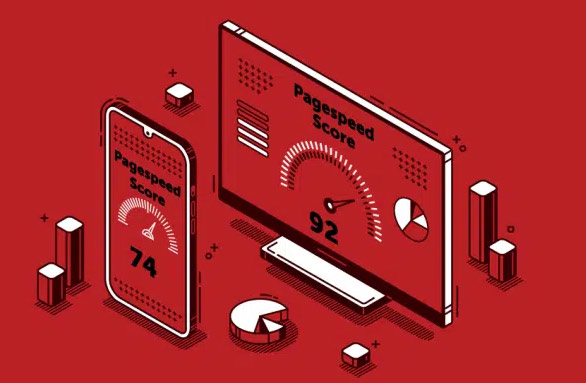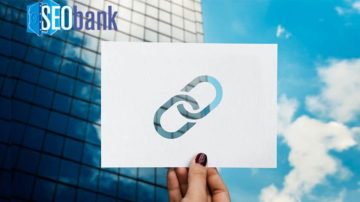Whether you’re a new business or an established brand looking to improve your Google Search rankings, optimizing your website for page speed is just as important as optimizing for SEO, with Google stating that speed is now a landing page factor for Search and ads. As you fill your site with SEO content and elements to draw in new visitors, you want those users to find your products and services quickly, granting more opportunities for overall success and fewer chances to miss out on conversions. No matter where you are on your page speed knowledge, here’s a quick guide to what page speed means, why it matters, and how it can affect your business.
What Is Page Speed?
In a nutshell, page speed can be defined as the length of time it takes for all the content of a page to load for someone clicking it, or the time it takes for that user’s browser (Chrome, Firefox, Safari, etc.) to receive the first bit of information from a web server.
Every page you visit is made up of separate elements: the HTML code used to create the page, the CSS files that help style those elements, different JavaScript files, images, videos, other multimedia, and more. Furthermore, all these elements affect a page’s load speed, meaning their size or the speed of the web server they’re hosted on will ultimately affect how fast that page loads for you when you click from Google or any other source to look around. Different pages on a website might load differently from one another, as these pages might be made up of more or less of these elements (i.e., more images, videos, or plugins, etc.).
Likewise, page speed is measured on Desktop and Mobile devices separately due to their differences, meaning you’ll have a different experience loading a page on your home computer than from your smartphone.
Important Note: Though they might sound or seem similar, page speed is NOT the same as site speed. Site speed refers to the average of several sample pages on a given website, while page speed refers to how long a person will spend their time waiting to start browsing one page, aka how long it takes to load for them to consume it.
Why Does Page Speed Matter?
Page speed matters because it affects the user experience. If you think about it, how likely are you to continue waiting on a page to load 3-5 seconds after you click to view it? Chances are you won’t wait that long, and when you roll your eyes or click away to choose another page or website to visit, that’s a direct result of your user experience being negatively affected.
The fact is, most users expect pages to load quickly, so when those people are met with a bad user experience, the business or website they click away from has lost their chance at a conversion: aka the likelihood of that person continuing through the website towards a desired goal. If you were shopping on Amazon for instance and the pages loaded so slowly that you instead went to Walmart.com, Amazon just lost you as a conversion opportunity. If you were instead hoping to hire a digital marketing agency to aid in your business goals and the slowness of their pages caused you to seek out a competitor, that agency also just lost a potential client. In both cases, these businesses would be working towards a better user experience for their visitors, as Google’s measurement of user experience is a vital metric in how they rank against their competitors.
How Does Google Measure User Experience?
To measure overall user experience, Google utilizes Page Experience signals to gauge how users perceive the experience of interacting with a web page beyond the information it provides. These signals include Core Web Vitals, aka Google’s measurement of a page’s loading performance, interactivity, and visual stability, the mobile-friendliness of a page, how safe a page is to browse (aka malware-free), whether the page is served over a secure connection, keywords, and more general concepts such as the page’s level of Expertise, Authority, and Trustworthiness – aka its E-A-T score.
How Does Page Speed Affect SEO?
Along with the SEO legwork (keywords, relevant content, etc.) done to a website’s pages to gain it better ranking in Google’s Search Results, Google has been shown to give favorable rankings to websites whose pages load faster as well.
Think about it: users with questions want those questions answered quickly, and one of the first places they’ll likely go to find those answers will be a search engine bar. If one website’s pages load faster than another, then that website stands to become the more popular choice over time.
To put it into perspective, if you’re a business with answers to user questions in the form of a product or service, and Google or other search engines take this into account, then it stands to reason that page speed optimization can work in tandem with SEO practices to give your website a ranking boost over your competitors. After all, when you’re in a highly competitive and crowded industry targeting equally competitive search terms, you’re going to want all the help you can get to reach and maintain that coveted #1 spot in Google SERPs.
How Can Page Speed Affect My Business?
As mentioned above, page speed can affect your business in the form of conversion opportunities, but it can also affect it in other ways as well. For instance, one key factor in gauging a page’s effectiveness is its overall bounce rate, or the rate at which people land on that page and do nothing. They don’t click on menus, they don’t click the “Read More” tags at the bottom, and in turn, Google Analytics doesn’t count them as a visitor. In other words, they leave the website after viewing that one page.
To add an example, let’s say you’re an SEO agency with pages dedicated to case studies and success stories of past or current client relationships. Your overall goal would be to use those pages as conversion tools for future clients. You’d want visitors to read about what you’ve done for your clients, think about what you can do for them, then follow a process or call to action to get in touch with you regarding future opportunities. You’d also want those pages to load quickly so users are able to find that information and go through that process with little to no issue.
If the bounce rates for those pages are high, it could indicate that the content on those pages is missing some relevance or confusing your visitors, possibly needing a refresh to better match user intent. It could also indicate that the user experience was affected in other ways, so using tools to check and optimize your page speed load times would be another solid consideration. On the other hand, if the bounce rates are low, that would be a sign that visitors are getting the information they’re seeking quickly and efficiently, meaning you’d likely see higher conversion rates from those pages.
What Tools Can I Use To Measure The Page Speeds Of My Business’s Website?
If you’re looking to see where your site stands in terms of page speed, there are a few tools you can use to check individual or sitewide Core Web Vitals scores:
- Core Web Vitals Report within Google Search Console
- PageSpeed Insights
- Chrome User Experience Report
Is There An Ideal Page Speed To Shoot For?
When it comes to page speed, there’s no set number that you need to focus on. Your goal should always be to have your website and its pages load as fast as possible. However, keep in mind that top-ranking pages on Google tend to load in 3 seconds or less. This means that if your competitors are loading slower, their bounce rates are likely higher, and you’re already at an advantage.
What Are Some Best Practices For Improving My Website’s Page Speeds?
There are several ways you can improve your website’s page speeds, and they begin with the following:
Compress Your Images: With images typically taking up 50-90% of a page’s size, reducing their file size is a great start towards reducing the load times of your pages. Unlike the compression tools of the past, today’s tools use lossless compression, so the reduction in image quality is barely noticeable.
Clean Up Your Code: Whether it’s HTML, CSS, or JavaScript, any bloated code on your page needs to be compressed and cleaned up, especially if it’s from features you no longer have on your site or shoddy developer work.
Use Browser Caching: Enabling the browser to store information such as images, stylesheets, and JavaScript files is a great way to improve page speeds, as it means the user won’t have to load things like your logos and footers from scratch with every visit.
Implement a Content Delivery Network (CDN): As a geographically distributed network of proxy servers and data centers, CDNs help reduce your page speed by figuring out the physical location of your page visitors and then serving up your website’s resources from a server closer to them.
Wrapping Things Up
When it comes to SEO and page speed, it’s clear that a lot of it boils down to user experience. Users searching for answers, products, or services want to get hold of that information quickly, and they want that experience to be optimized via relevant content and reasonable page loading times. Doing so leads to higher rankings in Google Search and higher conversion rates, no matter your business or brand.
Contact VELOX today to learn more about how we can leverage page speed and SEO best practices to optimize the user experience for your website and brand.
About the author:
VELOX Media is an award-winning, ROI-focused digital marketing agency that specializes in strategy, organic search marketing optimization, paid management, and web development. We specifically target a 400%-800% monthly ROI above spend and are ranked among the top 3% of agencies in the world by Google.





